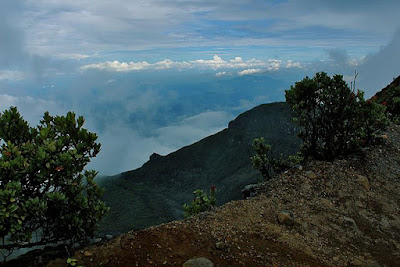THE BANTIMURUNG BULUSARAUNG NATIONAL PARK
 |
| Image by: www.bantimurungbulusaraung.id |
Bantimurung Bulusaruang National Park is also called TN Babul. The National Park covers the area of Maros and Pangkep Regencies in South Sulawesi. It is about 43.750 hectares and is one of the most biologically diverse regions of the world.
The butterflies and the karst mountains, rocks, and caves are the main icons of the National Park. All these natural beauties are outstanding and have become a very attractive tourist destination.
The history of the Bantimurung Bulusaraung National Park began when Alfred Russel Wallace started his expedition in 1857. A few years later, he published The Malay Archipelago, leading to more intensive research.
From the 70s to the 80s, the region was crowned a conservation area. The Department of Forestry of South Sulawesi suggested that the area be named Hasanuddin National Park. However, the process took a long time.
The Minister of Forestry finally issued a decree about changes in the function of the Bantimurung-Bulusaraung forest group, which covers an area of 43.750 hectares (SK.398/Menhut-II/2004, dated 18 October 2004).
Up till 2017, 711 species of flora that grew in the TN Batul forest area were identified. Six of them were protected plants, which are two palm species and three orchid species.
Karsts that contain magnesium and limestone grow plants like Nauclea Orientalis, Leea Aculata, Eugenia Acutangulate, Calophylum sp, Macaranga sp, Cassia siamea, etc. However, the floras in this ecosystem are quite limited.
The area of the national park has different rainfall patterns. The rainfall amounts in the eastern area are 2.250 mm and 3.750 mm, while the western part has 3.250 mm and 3.750 mm.
Several spots of the national park are upstream of some rivers in south Sulawesi. The upstream of the Waianae River is in the east part of TN Batul, while the upstream of Pangkep and Bone Rivers are in the west. Besides, a dozen springs and small rivers are found in the gaps of the karsts and a stream under the lake.
The ecosystem of TN Batul is divided into three. The forest ecosystem that is on the rocky karst is called the karst ecosystem, the nondipterocarpaceae ecosystem of rain forests, and the forest ecosystem of lower mountains.
Although it is famous for its butterflies, there are still dozens of floras and faunas hiding behind the beautiful panorama. Some haven’t been identified yet.
There are 80 prehistoric caves. The National Park which covers an area of 43 thousand hectares is indeed very attractive and worth visiting. As various species of butterflies live in this location, it is called the kingdom of butterflies. It is also known as the home of conservation education.
A waterfall is cascading down the cliffs and there is a lake at the nearby cave. Visitors can see the stalagmites and other beautiful things in the cave.
The Bantimurung Bulusaraung National Park is a historical tourist destination. It is known as Leang-Leang which keeps the culture of prehistoric humans, the drawing of babirusa, and various types of historical artifacts and cultures.
Exploring this area, our eyes will be treated to an amazing view of a group of towering rock cliffs. These clusters produce the distinctive beauty of karst walls. However, visitors should be careful, because the rocks in this area are quite slippery.
Leang Puteh Cave is in Labuaja village, Cenrana subdistrict, Maros district, and is the most adrenaline-testing location in Babul National Park. Leang Puteh is a vertical cave that is included in the deepest single-pitch category in Indonesia with a width of around 50 to 80 meters and a depth of up to 273 meters.
Exploring this cave requires standard equipment and special skills because the conditions are very challenging. The base of this cave is connected to the Dinosaur cave which is not far from the mouth of the Leang Puteh cave itself.
Still in Maros district, Samangki village, Simbang sub-district, there is a very interesting tourist destination, especially for visitors with an adventurous spirit. In the Pattunuang area, many challenging activities can be done.
Among these activities are rock climbing on steep limestone walls, exploring vertical and horizontal caves, following rocky rivers, exploring forests, and climbing towering karst hills. Not only that, visitors can also enjoy the sensation of camping in the wild.
Apart from offering natural panoramas, Pattunuang is also rich in flora and fauna such as the endemic primate Tarsius fuscus, various types of birds, and soa-soa. Another interesting thing about this area is the legend of Biseang Labboro an overturned boat that has become a rock on the bank of the Pattunuang River.
The Karaenta animal observation area is suitable for visitors who love knowledge combined with experience. This is because the area in Labuaja village is said to be a natural laboratory as it combines science and experience.
The Karaenta destination has various types of flora and fauna as well as natural beauty that is a feast for the eyes. In this area, visitors can also enjoy the attraction of black monkeys (Macaca maura) with the expertise of local officers. The view is further beautified by clusters of black Ebony wood.
The Leang Lonrong Baths, which are located in Panaikang village, Minasatene sub-district, Pangkep district, are a stream that originates from the Leang Lonrong cave. On the side of this bath, there are very interesting limestone cliffs. Towards the afternoon the tarsiers usually start wandering around in the crevices of the karst rocks.



Comments
Post a Comment